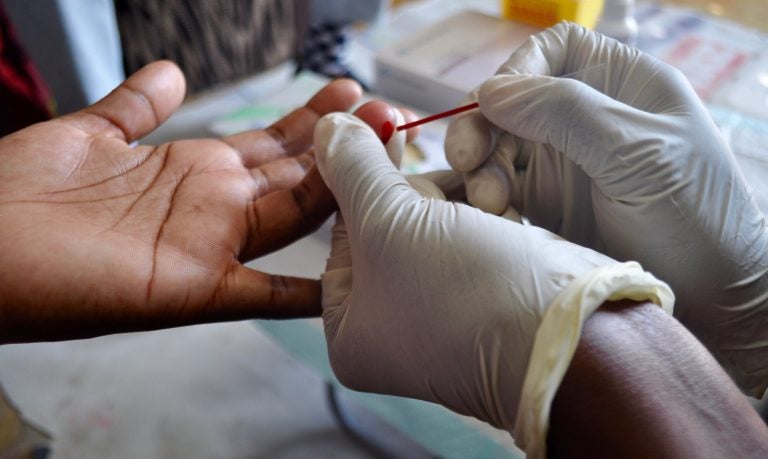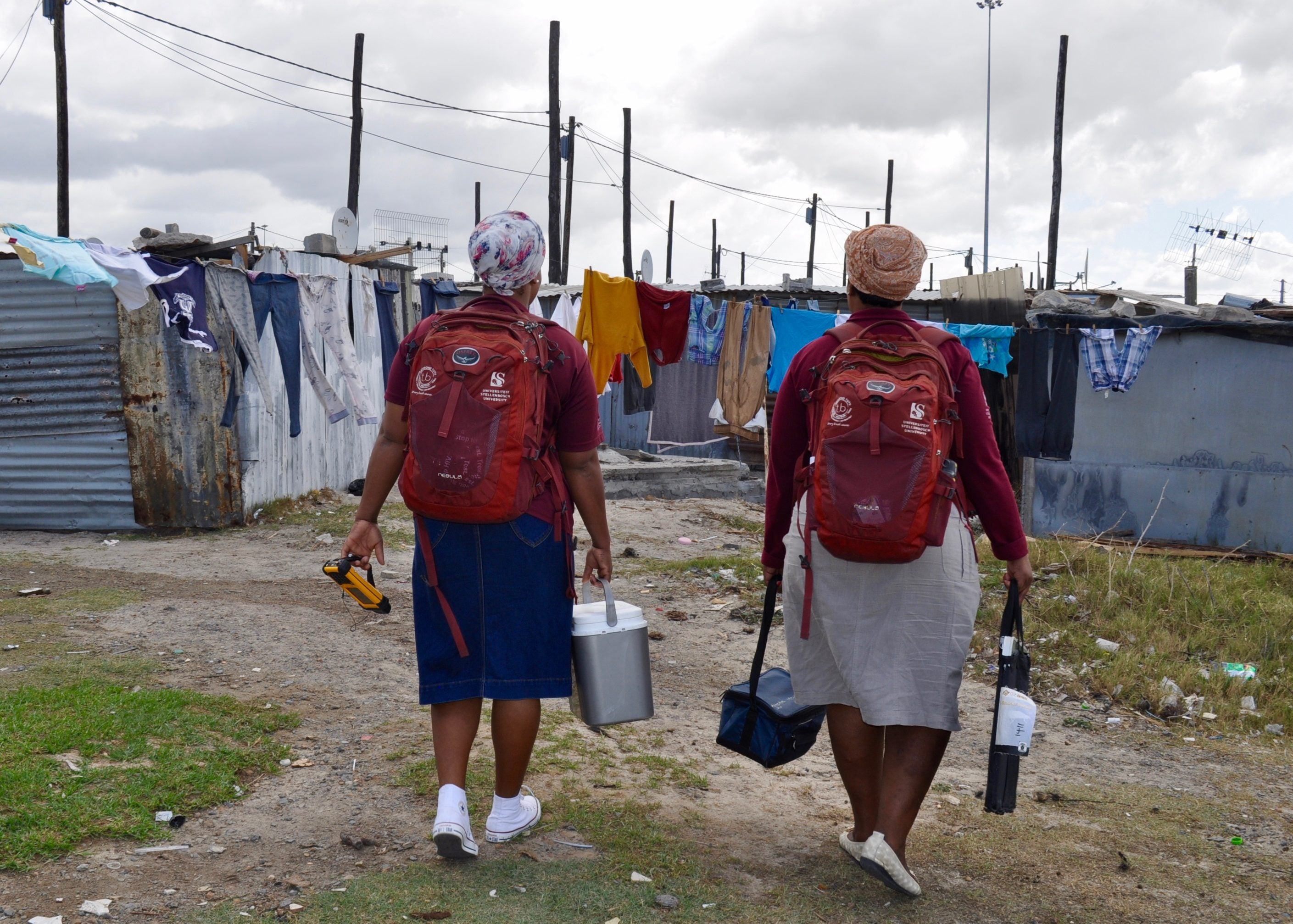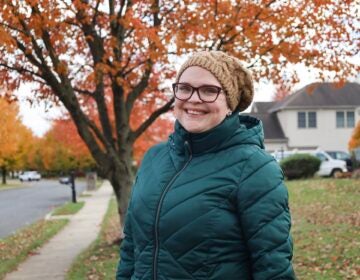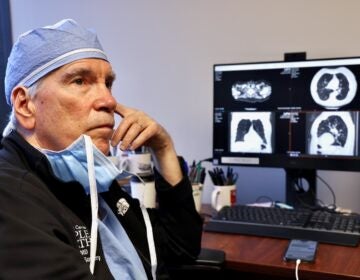They thought this HIV strategy couldn’t work. But it did

Drawing blood to test for HIV. (Kim Cloete/PopArt Study)
In high-income countries like the U.S., the standard of care for people infected with HIV is to provide antiretroviral pills when the virus is found, even when there are no symptoms of AIDS. The strategy staves off the disease and has a second — big — benefit. It has been shown to prevent the spread of HIV in sexual encounters. It’s called “treatment as prevention” (TasP in medical jargon), or “test and treat.”
But in low-income countries, “test and treat” is not the typical approach to prevention. There has been no research to support it.
So 10 years ago, researchers began planning a massive study of treatment as prevention in South Africa and Zambia. The team came from the London School of Hygiene and Tropical Medicine, Imperial College and from several other institutions in the U.S., Zambia and South Africa.
When they started, they said, there was some doubt in the AIDS research community about whether the effort would be successful. “People didn’t think we could provide antiretroviral therapy in sub-Saharan Africa at all,” says study co-leader Richard Hayes of the London School of Hygiene and Tropical Medicine. “There was a lot of skepticism.”
Helen Ayles, from the same institution and a Zambian research organization called Zambart, hit the same resistance. “People said you’ll never get communities to test, and you’ll never get communities to want to start treatment early and if you do they’ll never stay on the treatment.” That attitude sprang partly from past struggles to get people to follow a regimen of daily drugs, in both developed and developing countries — and from local mistrust when foreigners arrive in low-income countries to carry out a health mission.
The study provided “test and treat” to communities containing a total of about 1 million people in South Africa and Zambia from 2013 to 2018. The $130 million project is called PopART (Population Effects of Antiretroviral Therapy to Reduce HIV Transmission).
The findings show that the practice could play a crucial role in controlling the AIDS epidemic.
“The results are fantastic,” says Ayles. “We managed to demonstrate you can reduce HIV incidence by 30 percent. That’s an amazing thing.”
“This is a landmark study,” says Judith Wasserheit, a longtime AIDS researcher and head of the Department of Global Health at the University of Washington, who was not involved in the research. “Getting communities to adopt an intervention and sustain it is one of the great challenges of global health.”
Details of the new trial were revealed at the Conference on Retroviruses and Opportunistic Infections in Seattle this spring and will be published soon. The findings are likely to be a big source of discussion at the global AIDS and HIV conference in Mexico City in July.
The scale of the trial was immense. Researchers began annual HIV testing in 14 communities of 50,000 or so people each in urban neighborhoods and towns in South Africa and Zambia. Community health workers went to people’s homes, talked to them about HIV and HIV prevention, distributed condoms and offered on-the-spot testing. Those who tested positive were offered free antiretroviral therapy. Another 300,000 or so were in the control group, which did not offer “test and treat.”
The study was funded by the U.S. government and the International Initiative for Impact Evaluation with support from the Bill and Melinda Gates Foundation (which is also a funder of NPR and this blog).
In half of the 14 communities where “test and treat” was the protocol, anyone found to be HIV-positive was offered treatment immediately. The results from these communities were not that impressive: a 7 percent drop in new HIV infections compared to communities in the control arm, where testing and treatment were sometimes available but not with the concerted, door-to-door outreach of the PopART approach.
In the other half of communities where “test and treat” took place, for the first few years treatment didn’t begin until an individual’s white blood cell counts fell below a certain level. (Partway through the study, those communities were switched to immediate treatment when national guidelines changed.)
In those seven “test and treat” communities, whose combined population was about 330,000, the incidence of new infections was 30 percent lower than in the control group communities.
“We showed it’s feasible and acceptable to deliver this kind of intervention in towns in sub-Saharan Africa,” says Hayes.

Kim Cloete/PopART Study
The new study does leave one major question — why was the drop only 7 percent in the group in which HIV-positive people received treatment right away as opposed to 30 percent in the other treated communities where treatment was initially delayed?
“My first reaction was that the statisticians had got it the wrong way around,” says Hayes. But four different statisticians repeated the analysis and got the same results. The PopART researchers are mining the data to try and understand the difference.
There are other findings to consider from the study. Its designers believed that community buy-in would be key to getting people to accept testing and treatment. So at the start of PopART, the researchers solicited community leaders to serve on advisory boards to oversee the project and help the researchers find and train 700-plus community members to serve as health care workers. The process, says Hayes, “was like mobilizing an army.”
The idea was that these community health workers, who understood their patients’ lives and languages, could make a difference. “What PopART has shown is how important local health workers can be,” says Maryam Shahmanesh, an associate professor at University College London and an HIV prevention and sexual health expert.
Rosemary Phiri, a Zambian with no medical training, found a listing for health workers while looking for a job in her local newspaper. She wound up overseeing 112 workers in the program and went out on community visits.
“It was an amazing experience for me,” says Phiri, now 34 years old. “At first people were not sure what was going on.” Testing centers existed in some of the towns already, but this was a door-to-door effort. “When people realized we were there to help them stop this terrible infection, they became so receptive,” she says. “They saw we were there for their own good.”
Myron Cohen, a professor at the University of North Carolina, calls the new study “a road map.” Cohen is a principal investigator in a worldwide collaboration of researchers who run clinical trials on AIDS interventions, including this one. Cohen had headed the study that in 2011 showed that intensive attention — frequent visits to the health center and counseling on risk reduction and the use of condoms — and antiretroviral drugs can stop transmission between partners when one is known to be HIV-positive.
PopART builds on Cohen’s findings and other efforts, including a major study in South Africa. That study showed that HIV transmission is less frequent in communities where treatment is available compared to similar communities where it is not, suggesting that HIV transmission could be controlled on a population level.
And in early June, a study of a single community in KwaZulu-Natal done by Doctors Without Borders showed that engaging patient groups, local health workers and political leaders encourages people to be tested and treated. The study provided preliminary evidence that widespread outreach could decrease the spread of HIV in a poor area.
The U.N. has set eliminating the public health threat of HIV as a goal for the year 2030. Is that possible? Cohen quickly says yes, if an adequate effort is made — if every HIV infected person can be found, started on treatment and persuaded to stay on treatment. PopART co-leader Richard Hayes hesitates before answering. “I think it can be done,” he finally says. “But I think it will be a real challenge.”
Joanne Silberner, a former health policy correspondent for NPR, is a freelance journalist living in London.
9(MDAzMzI1ODY3MDEyMzkzOTE3NjIxNDg3MQ001))




